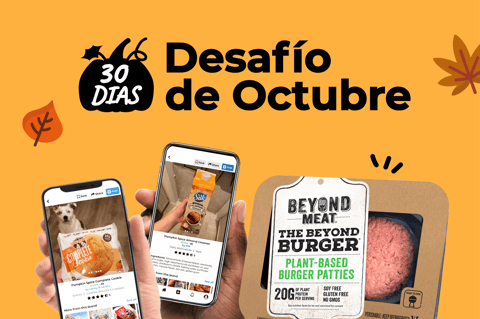 Helga Angelina and Max Mandias.
Helga Angelina and Max Mandias.
Green Rebel is fast becoming a household name in South East Asia. Their vegetable meatballs have just landed in Singapore and Indonesia’s Ikea stores catering to thousands of customers everyday.
Despite the scale, the company started out as a single restaurant calledBurgreens, which has now turned into Indonesia’s leading plant-based restaurant with 15 outlets under their belt.
Their guiding question is a simple one: “How can we introduce vegan food to be enjoyed by vegans and non-vegans alike?”
Today, the company has developed more than just vegetable meatballs — they’ve also created products like Beefless Steak, Chick’n Katsu, Beefless Rendang and Shroom Balls meant for other businesses too.Thus charts the journey of Helga Angelina and Max Mandias, founders of Burgreens and Green Rebel. We speak to Helga, on why they decided to delve into food manufacturing from the days of running a restaurant, the company’s trials and tribulations, and find out if Asia is ready to embrace plant-based dining.
Check out this video where our staff taste-tested some of Green Rebel products.
How did the entrepreneurship bug bite you?
I started Burgreens right after I graduated from college in the Netherlands, initially as a passion project. I have been vegetarian since I was 15 to heal my autoimmune conditions.
Then I learned more about the environmental benefits of going vegan and about animal cruelty in the dairy industry, which made me and Max — my boyfriend then now business and life partner — shift our diet and lifestyle to be 100 percent vegan in 2012. Max lost 12 kgs in three months, and healed his sinusitis and chronic stress when changing his diet. We were both amazed by the healing power of plants for both humans and the planet. It was like a plant-based calling and we decided to move to our home country to spread its goodness.
We realized that to convert mainstream eaters to plant-based/plant-centric diet in Indonesia, we needed to create a business that makes delicious plant-based foods that firstly satisfies the local palate and secondly, is accessible — and that’s how Burgreens idea came about.
What inspired you to start the consumer brand, ‘Green Rebel’?
When Burgreens turned six in 2019, we were reflecting upon our journey and whether the restaurant model is the best way to achieve our mission to democratize plant-based foods in Indonesia. We felt that it isn’t because we were limited with our reach and had quite a premium price point since Burgreens mostly uses organic farm-to-table ingredients.
The idea for Green Rebel then was born, a product company that will enable us to work with larger QSRs and restaurant chains to introduce plant-based foods to the mainstream crowd simply by swapping the protein.
It’s a spin-off of our plant-based beef and chicken which has been developed for years for in-house use. With the scalability of Green Rebel, we envision taking plant-based meat with authentic Indonesian and South East Asian flavors global.
What has the response from Indonesians been to plant-based foods as a whole?
When we started back in 2013, it was a very foreign idea. Fast forward to today, plant-based foods have become a culinary genre (in the way Japanese food / Indian food is) that many health-conscious or eco-conscious customers consume on a regular basis.
These people are excited about new products and flavors, but consistent quality remains the key to loyalty. Our work now is to introduce plant-based foods to the mainstream crowd and educate them on the health and environmental benefits, as well as continually introduce delicious and exciting options.

From Burgreens to Green Rebel, how has your journey been? Are there any challenges, lessons and insights that you can share with us?
The journey has been exciting and full of learning curves. We realized that Green Rebel is a B2B business and satisfying B2B clients is not as easy as pleasing end consumers. There are many stakeholders involved in decision making, therefore the process can be quite long — which is also the opposite of the restaurant business where all processes are very fast-paced.
Our biggest lesson was to scale manufacturing — we needed almost perfect resource planning before introducing new products, improving existing products, or catering to new big clients. That is very different from the restaurant arm as restaurants usually make diverse products with smaller-scale production batches. We are constantly levelling up our manufacturing operations and logistics as we grow Green Rebel. While at Burgreens we deliver products to our own restaurants, which enable us to tolerate small mistakes, FMCG clients do not accept mistakes in execution. This takes a whole new level of commitment to quality control and logistics management.
Managing cash flow can also be quite challenging in food manufacturing as we have to stock a significant amount of raw material in advance and are paid a few weeks or months after delivering the products. In restaurants, all consumers pay upfront.
How many products do you currently offer? Where are the products available?
We have 10 fixed SKUs spanning three product categories: Beefless, Chick’n, and Wholefood Protein. We also do customized products for big clients like Starbucks, IKEA, and Domino’s. Soon, we will be launching a new category, Plant-based Cheeze. Our first product in that category is Cheddar Cheeze block.
The products are now available in E-commerce, all Burgreens stores, and soon in over 100 supermarkets across the country. For ready-to-eat meals, you can find our meat in Burgreens, Starbucks, Domino’s, IKEA, Pepperlunch, and our other restaurant partners listed on Green Rebel website.
How did you come up with Asia’s First Plant-Based Whole Cut Steak?
We were thinking about what product could make a statement for World Environment Day and came up with a steak form. With the rising economy in Asia, the demand for meat has been increasing at an unsustainable growth rate. Steakhouses have become increasingly popular in Indonesia and we know that beef production has the most damaging environmental impact compared to other meat. So we decided to develop a whole-cut steak aiming to launch at the three biggest steakhouse chains in Indonesia in the world’s environment month and show how people can still eat their favorite meat dish from plants while reducing their carbon footprint.

How do you develop recipes with plant-based products? Is it different from the traditional cooking methods?
Usually, plant-based products need less cooking time than animal-based meats. We usually start the R&D process by brainstorming the dishes we love or miss, then start working on the base formulation. In some lucky cases, we get the flavors right in the third or fourth experiment. In other cases, we needed to trial more than 50 times to get the product right.
Do you find your customers are more drawn to Asian or Western preparations of these alternative proteins and how do you cater to these preferences?
When cooking at home, we see most Indonesian customers choose the Asian way of cooking. All our easy-cook products are Asian, whereas our base meats like Chick’n Fillet & Beefless Steak are very versatile. Customers and restaurant partners can use them for both Asian and Western applications.
Do you think Asians are ready to make plant-based foods part of their regular diet?
It depends on the maturity level of the market. In countries like Singapore, Hongkong, Taiwan, and China — yes, absolutely. In developing countries, that lifestyle is now adopted by a niche group of people in the upper-middle segment, but the trend is growing rapidly to reach a more mainstream crowd.




